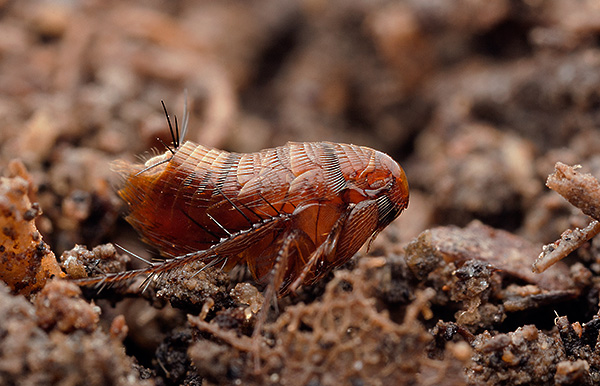
Although it is generally accepted that fleas usually jump on a person only when there are flea animals nearby, in reality, these parasites can often attack directly from the ground - for example, when visiting the basement of a house, when walking in the yard, and even hunting in the forest. In summer and early autumn, residents of some apartment buildings and private houses are literally invaded by so-called earthen fleas, which are not so easy to get rid of without understanding the characteristics of parasite reproduction.
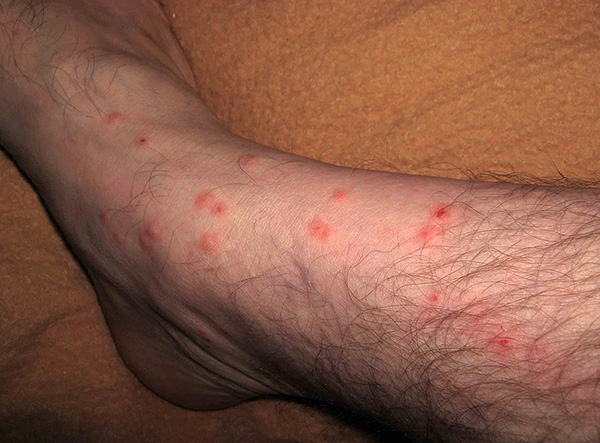
Let's see where, in general, these parasites come from in the earth and, most importantly, how you can effectively deal with them if they have already appeared in a house (or apartment) ...
Man's constant neighbors
For some, it may come as a surprise, but the so-called earthen fleas are the most common fleas that parasitize on cats, dogs, rats, mice, and, if successful, bite a person.
As for the epithet "earthen" - it can be said to be purely folk, it is used colloquially when they want to clarify that parasites are located on the ground (or on the floor, if we are talking about an apartment or a private house), from where they attack person. In fact, this is typical for almost all types of fleas, since it is in this way that they attack their prey.
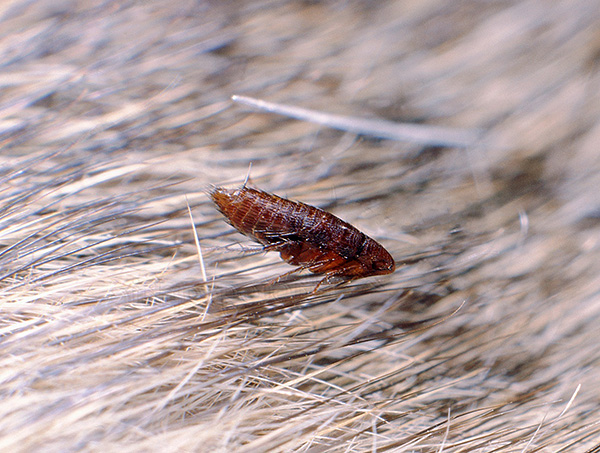
For example, most often in houses, apartments and basements a person is bitten by fleas belonging to the following species:
- cat flea;
- Southern rat flea;
- dog flea;
- Human flea.
It is almost impossible to distinguish them from each other with the naked eye, and even specialists require a microscope and professional experience for this.
The photo below shows a rat flea under a microscope:
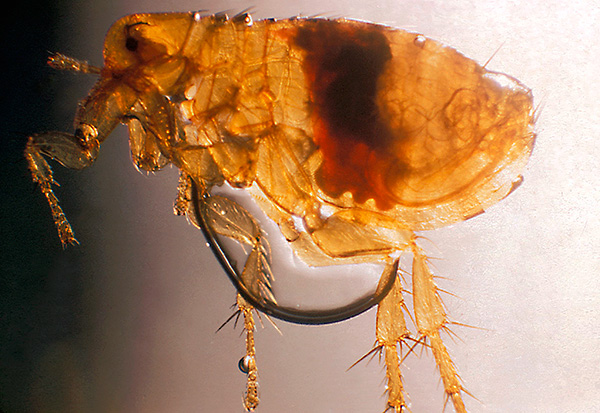
Given the real size of these insects (about 2-3 mm in length), it is extremely difficult to notice the difference between individuals of different species without a microscope.
In addition, it should be borne in mind that species names do not mean at all that, for example, cat fleas parasitize only cats, and rat fleas only rats. These parasites are universal and can feed on the blood of different animals: for example, a cat flea can bite cats, dogs, and humans with equal success. And, for example, representatives of different types of fleas can simultaneously parasitize on one rat.
Parasites bite both wild and domestic animals, including pest rodents, and with them they also penetrate into human housing. Here, in the basements of houses and apartments, they can leave the body of the owner, moving to the floor, and when hungry, they attack people if possible.
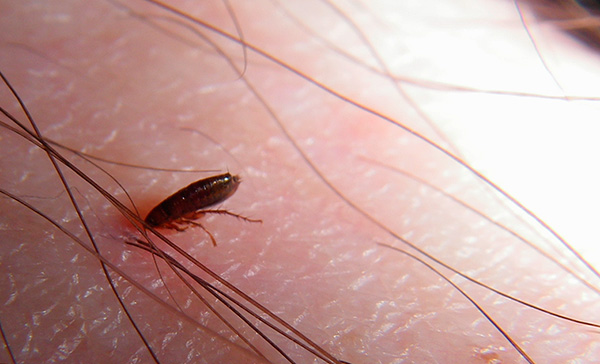
All these parasites are commonly referred to as earth fleas, and all of them can be fought with the same methods.
On a note
Perhaps one of the most common questions that residents ask to pest control workers who come to treat basements of houses from fleas is how earthen fleas differ from cat fleas. As you now understand, there are, in fact, no differences, since we are talking about the same insects.
Outside the body of the host, adult fleas move by jumping, and run only in the animal's fur. Consequently, they can only jump onto the human body from the floor or from the ground.
The photographs below show what an earthen flea looks like at the time of the bite:
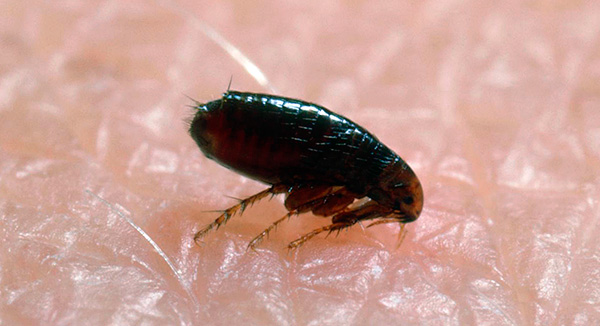

A characteristic feature of the appearance of these parasites is a body flat on the sides, shiny covers (by the way, they are very durable and protect the flea from being crushed). But the easiest way to identify the parasite is precisely by its jumps: it may seem that the insect that just sat on the skin seemed to have disappeared - the flea jumps so fast that the human eye does not have time to track its movement.
On the street, earthen fleas bite, first of all, open areas of the body. Usually the legs are affected, less often the arms and neck. At home, parasites have enough time to get under clothes.
On a note
In some countries (for example, Thailand, Vietnam, India), true earth fleas can be found - they are also called sand fleas. The female of such a parasite literally burrows under the skin of a person and remains there, feeding on blood and gradually swelling in width, since a large number of eggs develop in her body. Not extracted in time, it causes suppuration, which sometimes develops into gangrene and requires amputation of the limb.
Photos of the sand flea extracted from the leg:
Fortunately, sand fleas are not found in our country.
Meanwhile, in Russia, earthen fleas are sometimes called insects that have nothing to do with blood-sucking fleas. For example:
- Podura are arthropods that live in the ground, and not on its surface. In a private house or apartment, they are found in flower pots, and, multiplying in large quantities, can lead to the death of plants. Getting rid of such earthen fleas is also not so easy;
- A genus of small leaf beetles with jumping hind limbs. They are known as pests of agriculture and vegetable gardens. The photo below shows a beetle from the family of earthen fleas:
Podura and leaf beetles do not bite either humans or animals. Parasitic fleas feed exclusively on blood, and therefore, for life and reproduction, they are forced to bite people, dogs, cats or rodents.
Where do earthen fleas come from in a house or apartment?
It is widely believed that fleas infest only in dirty rooms that do not maintain the proper level of sanitation. This is only partly true - the worm-like larvae of fleas, the existence of which not every person suspects, will really develop more comfortably on the floor of a poorly cleaned room. However, adults of parasites often appear in very clean residents, and everywhere where they can physically penetrate and regularly feed on blood.
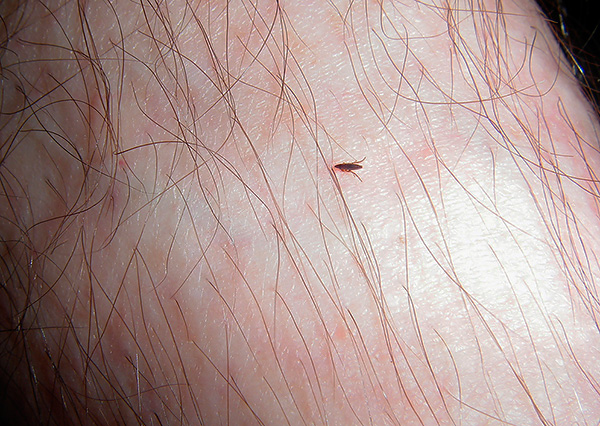
As a rule, earthen fleas enter a house or apartment with pets that periodically walk on the street and do not wear special anti-flea collars. Even two or three fleas that jump on a dog eventually scatter eggs throughout the house - then larvae will hatch from them, which will quickly turn into full-fledged bloodsuckers.
However, often earthen fleas enter the room in other ways:
- They penetrate from infected neighboring premises - from basements and entrances, from attics, as well as from neighbors who keep dogs or cats and do not keep cleanliness. Often in the warm season, earthen fleas from the basement can enter en masse into apartments on the ground floors (the same applies to private houses);

- They are brought into a house or apartment with rats and mice. These rodents are almost always infested with parasites, and if they visit a dwelling constantly, they will surely leave a few fleas here. If such a rodent dies (from poison, in a mousetrap, or for any other reason), all fleas quickly leave his body and look for a new victim;

- Through windows and doors from the street (from the yard). Just imagine that in your yard under the window, flea larvae are teeming in the ground and, in addition, flea cats and dogs walk: parasites need very little time to enter the room (provided that the windows are not high);

- They are brought into the house by the person himself on clothes or directly on the body. For example, fleas in large numbers can jump on the clothes of a person who has visited the basement (plumbers often suffer from this), and jump off when the person returns to the living quarters. The same applies to hunters, who, passing, for example, next to fox holes, also often cling to themselves a huge number of hungry fleas.

On a note
Earth fleas live on average 1-2 months in the presence of food, although under ideal laboratory conditions, some individuals lived up to a year or even more. If these parasites bite en masse in an apartment or a private house, it means that they have already successfully settled here and actively multiply.In this case, it is necessary not so much to look for ways for them to enter the room, but to eliminate the conditions due to which they safely breed, as well as get rid of the already existing population of parasites.
Sometimes it is generally problematic to find out where earthen fleas come from in a particular apartment: it would seem that there are no pets, neighbors do not suffer from the invasion of parasites, and rats and mice, according to the owners, have not been seen for years. In such situations, the most likely option is the accidental introduction of fleas into the house on clothes (both residents and guests can bring them in).
Where in the house to look for these parasites and their larvae?
To effectively deal with earth fleas, it is important to have a good understanding of their life cycle. As practice shows, most people do not even realize that they have a huge number of flea eggs in the basement of the house (or on the floor of the apartment), and flea larvae that look like small worms can swarm in the corners of the room. And out of ignorance, the whole struggle comes down to an attempt to get rid of only adults - the very ones that jump and bite.

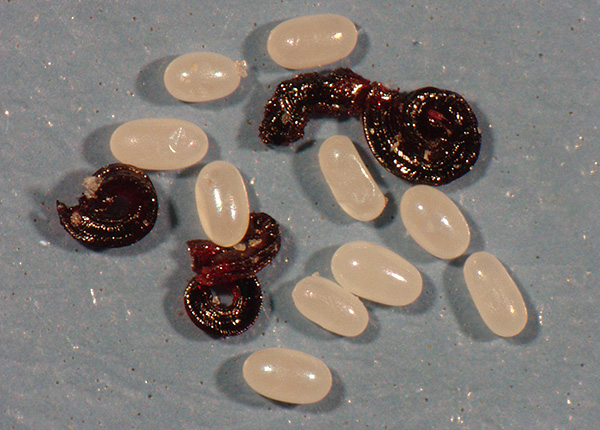
So, fleas reproduce with a full development cycle:
- Each female, after maturation of the eggs, forcefully pushes them out of the body, and they literally scatter from the animal's fur around the room;
- Small worm-like larvae hatch from the eggs, which feed on almost any organic matter - from garbage under bedside tables to sawdust soaked in urine in a cage with a hamster. It is clear that such larvae can be located almost everywhere, even where there are no adult fleas. And in order to destroy them, you need to process literally every square centimeter of the floor with special means;
- After some time, the larvae turn into pupae. The pupae do not move and do not feed on anything, while they are resistant to most insecticidal drugs. Pupae are located in the same place where parasite larvae live.
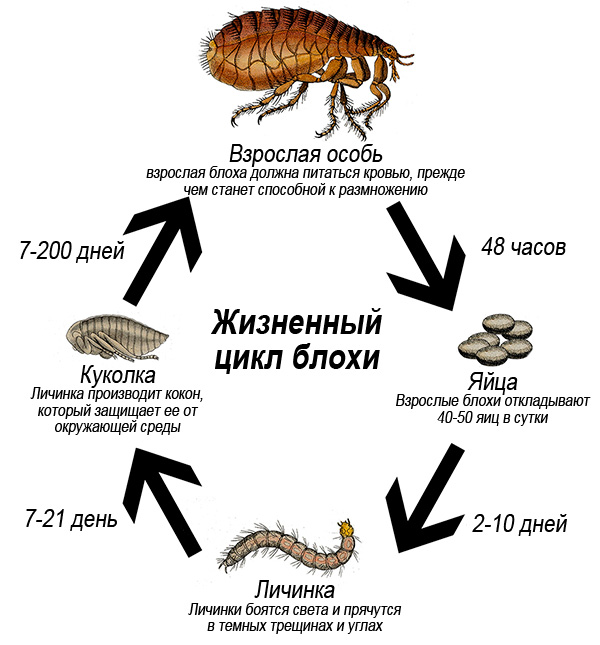
As for adult fleas, due to their small size and flattened body, they can hide literally anywhere in housing, including between parquet boards, in upholstered furniture, behind baseboards. However, they usually choose as shelters those places near which their victims are most often found.
It can be:
- Bedding on which the dog sleeps;
- Slits in a wooden cage with a rat or a hamster;
- cat house;
- Toilet for a cat;
- Corners, baseboards and furniture near the place where the animal spends most of the time;
- Beds, sofas, armchairs.
In the basements of private houses, fleas concentrate near the passages of rats and mice, and in the basements of high-rise buildings - where dogs and cats constantly spend the night.
How to deal with earthen fleas?
To remove earthen fleas from the house, you must:
- Block the ways of possible penetration of parasites into the room;
- Eat fleas in pets;
- Destroy parasites and their larvae in the house. Often it is not possible to get rid of fleas in an infected room in one treatment - then a repeated disinfestation procedure is necessary.
All these actions must be performed in the specified sequence, otherwise it is possible to restore the number of parasites in the room.
In animals, fleas are poisoned using special insecticidal drops (for example, Hartz, Frontline, Stronghold), sprays (Frontline, Hartz), shampoos (Beaphar, Leonardo, Doctor Zoo), as well as using specific means (tablets, injections, emulsion concentrates for dilution and spraying - for example, Butox 50). Most modern remedies allow you to get rid of fleas in a pet quickly enough and at the same time relatively safe for the health of the animal (subject to strict adherence to the instructions for the use of the relevant drugs).

Anti-flea collars also give a good effect, but they are best used as a preventive measure to further protect the pet from re-infection with earthen fleas.
On a note
It should be borne in mind that indoor flea products are not suitable for treating an animal, although they may use the same insecticides as, for example, drops on the withers or insecticide sprays for dogs and cats. The fact is that in preparations intended for disinfection of premises, the concentration of the active substance can be ten times higher than that allowed for the treatment of animals. In addition, technical insecticides may contain undesirable impurities.
Choosing a drug for removing fleas on a pet should be in agreement with the veterinarian.
To independently get rid of earthen fleas in an apartment (or in the basement of a house), for example, the following types of insecticidal preparations can be used:
- Insecticide concentrates adapted for domestic use - they are diluted, after which they are sprayed from a conventional spray gun.From fleas, pyrethroids (cypermethrin, tetramethrin, deltamethrin, lambda-cyhalothrin) and organophosphorus compounds (chlorpyrifos, fenthion, malathion and others) help well. Today, ready-made concentrates of these insecticides are on sale, which at home are simply diluted in the desired concentration with water. Here are examples of some of the tools that allow you to effectively get rid of earthen fleas in the room, even in the most advanced cases: Xulat Micro, Get, Lambda Zone, Delta Zone, Agran, Tsifox and some others;

- Aerosol preparations in cans, ready for use (for example, Dichlorvos of different brands, Raid, Combat, Raptor, etc.). They are easy to use, but not very economical - a sufficient number of cylinders to process a large basement will cost much more than a concentrated preparation;

- Powdered insecticides, also called dusts (Clean House, Phenaksin, Ecokiller, Pyrethrum powder, etc.). Such powders are especially effective in destroying earth flea larvae, so it is advisable to combine them with other types of preparations.

With these funds, it is necessary to process as fully as possible all the places where fleas and their larvae can hide. If the drugs are used correctly, then the vast majority of parasites can often be destroyed very quickly - literally in a few hours, and taking into account the preparatory measures, the whole struggle will end in one day.

On a note
It is useless to try to eradicate earth fleas with gels and poisoned baits for cockroaches and house ants.The fact is that such funds are designed for insects to eat and poison them (the active substances in them have an intestinal toxic effect). Fleas, by virtue of their biology, feed only on blood and will be indifferent to baits. As for the larvae of fleas that feed on everything, most of them simply will not crawl to poison.
Many try to get rid of earthen fleas in the house using folk remedies - decoctions of herbs, gasoline, kerosene, combined solvents, vinegar. Sometimes parasites are even frozen or tried to be destroyed by high temperatures using hot steam. In some cases, such methods and means are effective, but more often they give only a partial result, while being significantly inferior in terms of ease of use, reliability and effectiveness to modern insecticidal preparations.
On a note
It is rarely possible to scare away fleas from an apartment with the help of the smell of wormwood, tansy or ammonia. Yes, it can be said that adults are afraid (more precisely, they avoid) the smells of certain herbs and technical liquids, but they are not always able to leave the room on their own - windows and doors are simply closed. And certainly flea larvae will not go anywhere, which can be reliably removed from the house only by destroying them with a poisonous substance.
Do not forget that pest control specialists can help get rid of fleas in the house. This is more expensive than buying drugs and poisoning parasites on your own, but often more reliable and easier. Specialists use powerful tools and, in addition, they know which places in the apartment need to be processed in order to kill both adult fleas and larvae.
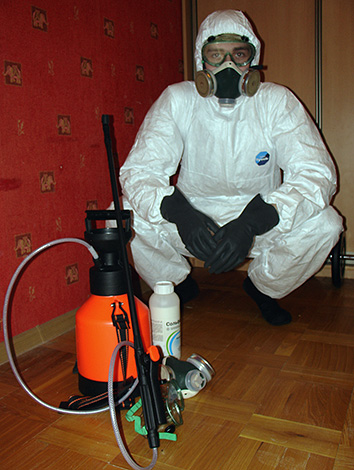
If fleas constantly climb into an apartment from the basement or from the attic of the house (often attacking residents facing the yard), then you may not have to do anything on your own to remove them. This is the domain of SES, and they should solve the problem together with the management company. Your task is to seek a solution to the issue by the forces of the SES itself, and the more residents of the house can be involved in this process, the higher the likelihood of success.

What can be dangerous flea bites and what to do if you are still bitten
Perhaps the first thing to keep in mind is that fleas can indeed pose a danger to human health, despite the fact that they are often treated without due attention, as a minor annoying misunderstanding. And it is the danger of regular flea bites that is the main reason to hurry up with the removal of these parasites from the premises.
At a minimum, earth flea bites are painful and itch for a long time, the bite site often becomes inflamed (especially for children who comb the wounds, introducing an infection into them, which leads to suppuration).
The photographs below show a few examples of what earthen flea bites on the legs and body of a person may look like:

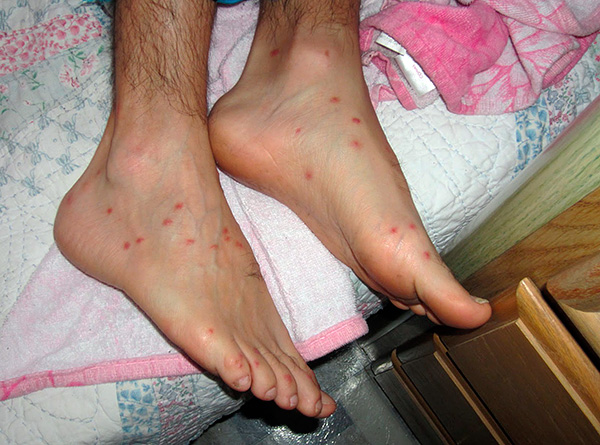
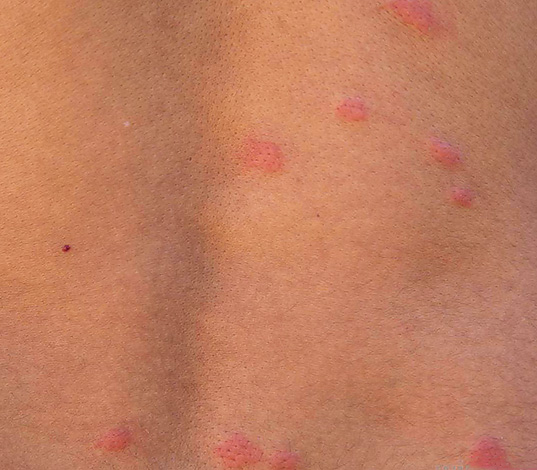
Much more serious is the fact that fleas can be potential carriers of pathogens of the most dangerous diseases - plague, anthrax, typhoid, brucellosis, encephalitis and some others. It should be remembered that it was fleas that were one of the causes of the devastating plague pandemics in Egypt and the Middle East (the number of victims was about 100 million people) and in Medieval Europe (then, according to rough estimates of historians, 25 million people died from the disease).
In addition to bacteria and viruses, fleas also carry some helminths.
This does not mean, however, that after a flea bite, you should immediately run to the doctor. Most flea bites today are not accompanied by infection, and therefore it is enough to anoint the painful wound with a suitable ointment to relieve pain (for example, in the absence of contraindications, Menovavan, hydrocortisone ointment, Fenistil emulsion or Psilo-balm can be used). Such remedies, moreover, will reduce inflammation and prevent the development of an allergic reaction.
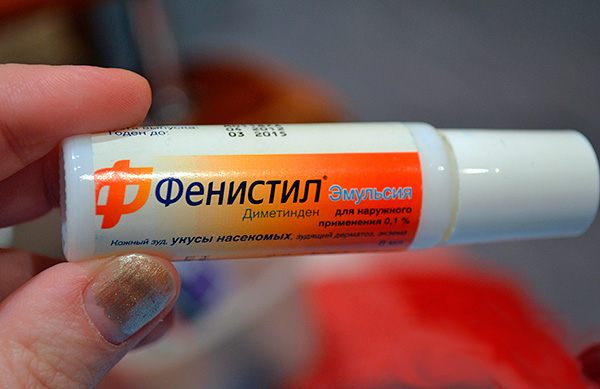
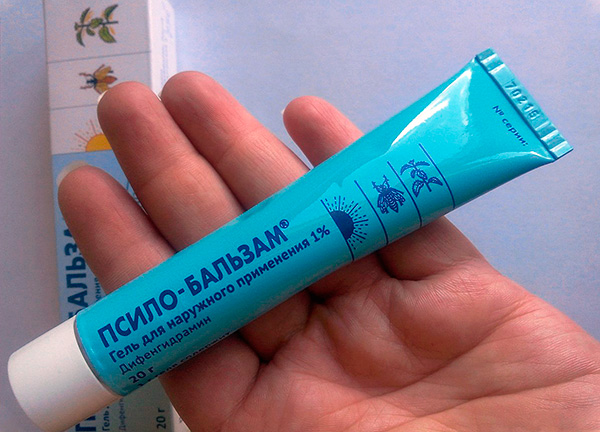
As a rule, no special treatment for flea bites is required, although sometimes victims try to “treat” bites with folk remedies - alcohol tincture of propolis, vodka (inside), parsley juice and even a piece of potato. In this regard, it would be preferable to treat flea bites with brilliant green or iodine - for antiseptic.
In general, when receiving multiple bites, you should carefully monitor your own condition for some time: if there are signs of a deterioration in well-being - the body temperature rises, pain in the head or abdomen appears, a fever develops - then you need to go to the hospital.
On a note
There is an opinion that earthen fleas do not bite all people, but do it selectively, and there are many explanations why this happens. Someone even seriously believes that fleas choose a victim by blood group or psychotype.
In fact, fleas are completely illegible in their choice of prey - they are equally willing to drink the blood of any person who is nearby. And the corresponding opinion is due to the fact that some people hardly feel flea bites and do not complain about them, especially when the parasites are not particularly numerous.It is clear that when one person in the house does not suffer from bites at all, and the second, whose skin is prone to an active reaction to insect bites, itches endlessly, it seems that the parasites bite only one of them.
How to protect the apartment from the reappearance of these insects?
To prevent the reappearance of earthen fleas in the room, you must:
- Regularly use protective equipment in pets - anti-flea collars, insecticidal drops on the withers;

- If we are talking about a private house - get rid of all the rodents that enter the room and control their absence in the future;
- For an apartment building - create conditions that exclude the mass reproduction of fleas in the basement and in the attic (for example, sprinkle insecticidal powder on the floor, or spray insecticide in the warm season about once a quarter);
- Carefully wash and check things in which a person visits a basement or cellar, goes hunting;
- Regularly wash bedding on which pets sleep;
- Regularly clean the room (a conventional vacuum cleaner simply will not leave flea larvae a chance to survive, for example, somewhere in the dust near the baseboard).
On a note
If fleas attack from the ground right in the garden, then, as a rule, the destruction of rodents helps - it is in their holes that parasites breed.
If you personally had to deal with the invasion of earthen fleas - share your experience by leaving a review at the bottom of this page (in the comment box).
Useful video: how to get rid of fleas in the apartment

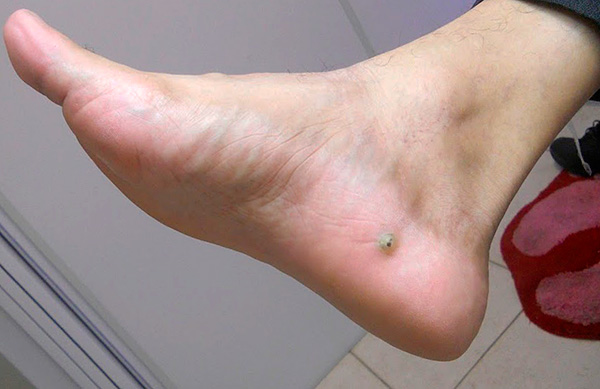

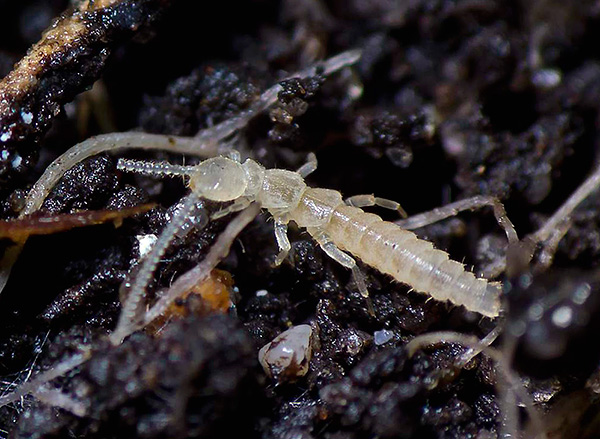
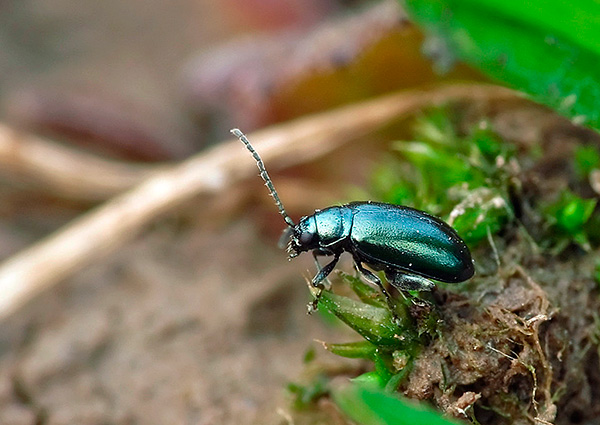
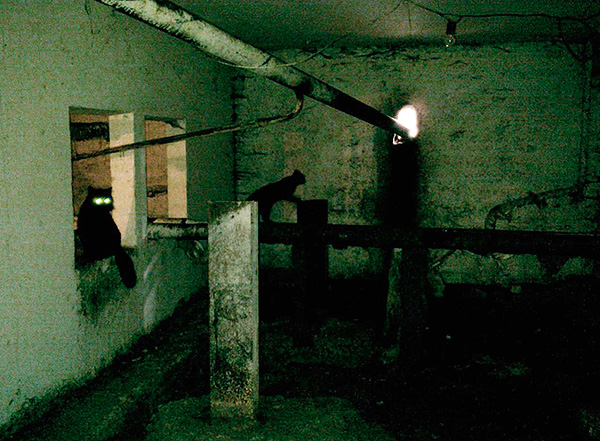


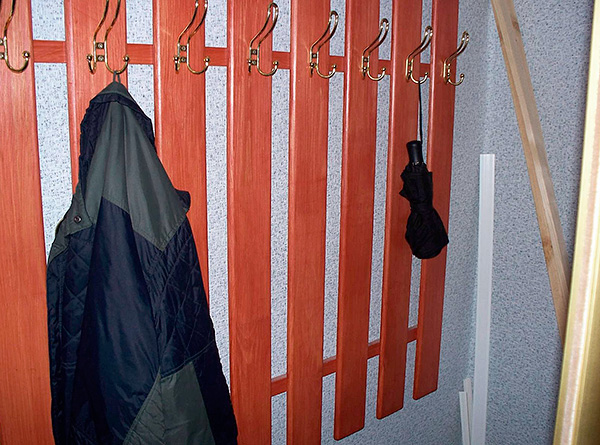

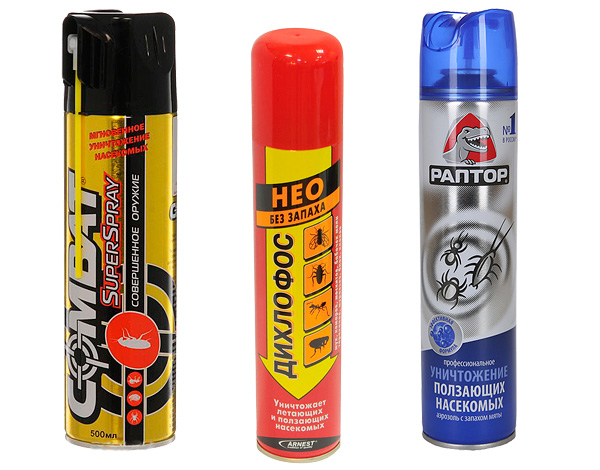

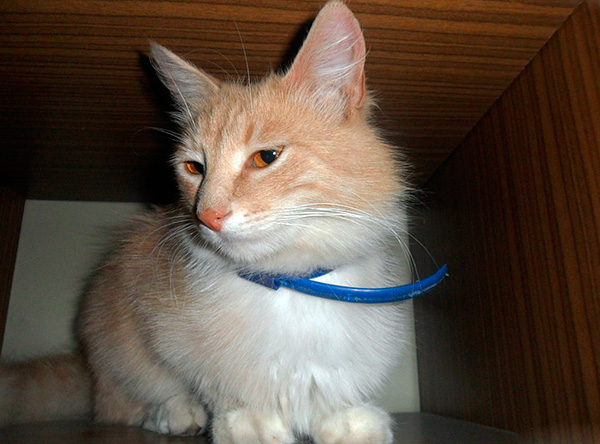
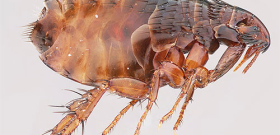

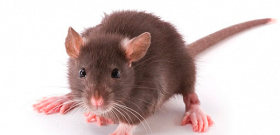
Why do cats have fleas?
Because fleas love to live on cats.
))
Of course, fleas must be fought, they bite, and how ... They dig into the skin, taking a perpendicular position with respect to the surface, and suck blood. I was convinced of this by taking it off and pressing it down. It is not yet known what infection she brought, a blister formed at the site of the bite. I often meet people with such blisters on their feet.
They bit me completely - my son went fishing (they are teeming there) and, apparently, he brought me on clothes. They don’t gnaw on my husband, but I’m all bitten. Itching is unbearable 🙁
Why don't fleas bite everyone? They bite me, but my husband doesn't. Likewise with mosquitoes. Does it depend on the blood type?
If, for example, a room is treated with concentrates, will the animal suffer because of this? How to pickle without risk to the little animal ...
And where are the names of the drugs that were advised in the video?
This year we have just an invasion of fleas! In the summer they ate everything in the garden, and with the onset of cold weather they moved into the house. Whatever we do not poison, there is no result. It never happened.
This year, just an invasion, several types of drugs were used. We live in the house, earth, an air cushion and a wooden floor, and now they climb out of the cracks. A catastrophe, everyone is bitten, and in children the bites are directly inflamed. Woe, we are going to sell the house and buy something else. There is no money to change the floor in the whole house, there is only one way out.
I picked up fleas in the basement, but, accordingly, did not know anything. After a couple of days, the night turned into a nightmare, they thought that we would be eaten alive! I bought two spray bottles (I don’t remember the name, alas). We processed all the sofas and under them, baseboards, laminate, under and behind the furniture. We walked for a couple of hours, vacuumed and did a wet cleaning. It seems to have been destroyed. A week later, to enhance the effect, the process was repeated. It's been 15 days so far.
At what temperature do they die in winter?